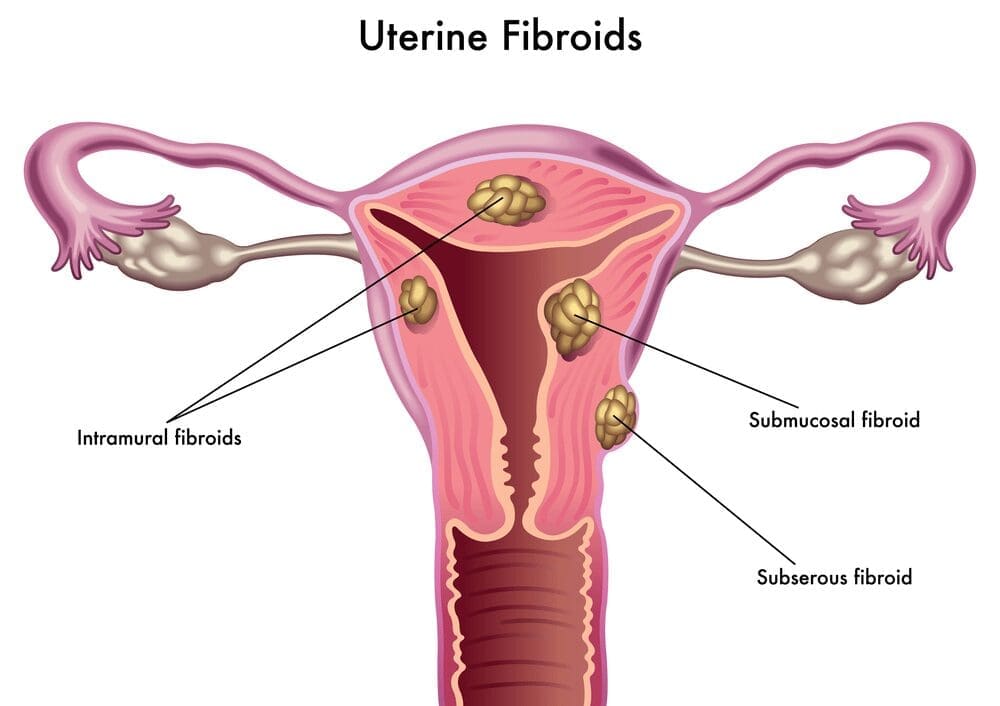If you have heavy, uncomfortable periods, back pain, and constipation, you might have fibroids in your uterus. Eliminating these growths can improve your periods and other negative symptoms. At North Texas Fibroids in Flower Mound, Cedar Hill, and Dallas, Texas, we can use a technique called uterine fibroid embolization to shrink your fibroids.
Can Fibroids Grow Back After Uterine Fibroid Embolization?
Uterine fibroid embolization, also known as UFE, is a minimally invasive medical treatment that will block the blood supply to the fibroids in your uterus. Over time, this treatment will cause your fibroids to shrink. The result of this medical treatment will vary depending on the quantity and condition of your fibroids, your general health, and other variables.
An Effective Technique
This technique is usually a very effective way to treat fibroids. A UFE can improve a large number of fibroids in a woman’s uterus, including very small nodules that may not be visible during diagnostic tests. As a result, scientific studies show that women’s fibroids usually do not grow back after they receive this treatment.
Relieving Your Symptoms
If your fibroids do return, they are likely to grow very slowly. In addition, these new fibroids probably will not cause you to experience painful periods or other negative symptoms. As a result, UFE is more effective than many other fibroid treatments. For example, if you use medication to manage this medical issue, your fibroids may grow back after you stop using this treatment. In contrast, a UFE is likely to improve your symptoms for many years.
What Are the Symptoms of Uterine Fibroids?
Your fibroids causes you to develop heavy periods, fertility problems, and other physical issues.
Period Issues
Uterine fibroids may cause you to develop very heavy periods. In addition to experiencing a large amount of blood loss during your period, you might pass clots and become anemic. Your periods could also last for many days.
Difficulties With Intercourse
Fibroids can cause you to experience pain during intercourse. In addition, you might begin to bleed after you have sex.
Back and Pelvic Pain
Your fibroids might press on the nerves in your spine and muscles in your back. This pressure can cause you to develop back pain. In addition, you might have severe cramps during your periods. If you are suffering from fibroids, you might have to take time off from work or avoid social events during your prolonged, painful periods.
Fertility Problems
Sometimes, fibroids will not prevent you from having a successful pregnancy. However, if you have large fibroids, you might have difficulty becoming pregnant. Developing many fibroids in your uterus can also lead to fertility issues.
Urination and Constipation Issues
Fibroids can press on your bladder and cause you to repeatedly go to the bathroom to urinate. In addition, fibroids that press onto your rectum or colon can cause you to experience bloating and constipation issues.
Why Have I Developed Fibroids?
Scientists do not fully understand the medical issues that cause some women to develop fibroids. However, they do know that a number of risk factors will increase women’s chances of experiencing this problem.
Your Diet
Eating certain foods can raise your risk of developing fibroids in your uterus. In particular, eating sugary foods and red meat can increase your likelihood of developing fibroids. Drinking alcohol will also increase your risk. Eating plenty of vegetables and fruits can lower your chance of experiencing this health issue.
Your Hormones
Scientists believe that your hormone levels play a large role in the development of fibroids. If you have higher levels of estrogen, you will have a larger chance of growing fibroids. After you go through menopause, your fibroids may begin to shrink. At this point in your life, your negative symptoms should improve.
Your Lifestyle
Maintaining healthy weight and exercising regularly can decrease your chance of developing fibroids in your uterus. In addition, controlling your stress levels may lower your chance of developing this problem.
How Should I Prepare for My UFE?
You’ll have a consultation with us before we perform your UFE. During our consultation, we will let you know if you need to receive diagnostic tests before your treatment. In addition, we will describe our different sedation options to you. Under most circumstances, you will receive conscious sedation. This medication will allow you to feel relaxed and sleepy during your treatment.
We will also ask you to tell us about any allergies or sensitivities that could impact your treatment. For example, you should let us know if you have an allergy to iodine, shellfish, gelatin, or contrast agents. In addition, we will need to know if you are allergic to any medications.
What Will Happen During My UFE?
UFE is a straightforward treatment that doesn’t take a long time to complete.
Receiving Sedation
Before we start your treatment, we will give you medication that will make you feel sleepy or groggy. Once this medication has taken effect, we will move you into our Radiology Suite.
Shrinking Your Fibroids
It will usually take us less than an hour to complete your UFE. We will start this process by making a very small incision in the skin on your thigh. We will use X-ray technology to guide us as we place a small tube into your femoral artery and move this tube toward your fibroids.
Once this tube is in position, we will inject small spheres into the blood vessels that feed into one of your fibroids. These spheres will stop your blood vessels from providing oxygen and blood to your fibroid. Over time, this deprivation will cause your fibroid to shrink.
Completing Your Treatment
As we move our tube around your uterus, we will use our small spheres to block the blood and oxygen supply to your other fibroids. After we have finished treating your fibroids, we will remove this tube from your body. During the next several minutes, we will apply gentle pressure to the incision on your upper thigh. In addition, we might use a special device to close this incision.
Beginning the Recovery Process
You will need to stay in an observation site for up to 24 hours after your treatment is complete. Once we have determined that you are ready to be discharged, we will provide you with a detailed list of instructions to follow during the next several days.
What Should I Expect During My UFE Recovery Period?
Since this treatment is minimally invasive, you will probably have a fairly short recovery period.
The First Day
You will usually stay in our observation room for 12 to 24 hours. Since you will be tired when you leave this room, you will not be able to drive yourself home. Instead, you should have a close friend or relative take you back to your house. To help you feel comfortable, we may instruct you to take medication during the start of your recovery.
The First Week
During the next seven days, you should rest your body and avoid engaging in very intense or stressful activities. Instead of performing challenging activities, you should try to take a short walk every day. Taking a slow, gentle walk will improve your blood flow and help your body recover. In addition to instructing you to rest your body, we will typically advise you to take this week off from your job.
The Second Week
You’ll usually be able to go back to your normal routine within eight to 14 days. If you feel ready, you will probably be able to go back to your job and continue exercising at this point.
The Next Several Months
Your heavy periods and other negative symptoms are likely to improve within three months after your UFE. As your back pain, prolonged periods, and other problems decrease, you will have more energy. In addition, you will be less likely to take time off from work or avoid social activities during your period.
Can I Use Other Methods To Treat My Fibroids?
You can use a variety of medications, treatments, and procedures to improve your fibroids. The technique that works for you will depend on the size and quantity of your fibroids, your pregnancy goals, and other factors.
Taking Medication
If you have minor symptoms, we may advise you to use medication to improve your health. For example, taking birth control pills or receiving an injection can regulate your hormones and reduce your symptoms. However, these techniques will not shrink or eliminate your fibroids.
Receiving an Endometrial Ablation
The inner lining of your uterus is known as your endometrium. Removing this lining can control your heavy bleeding. Medical providers can use electricity, lasers, heat, and other techniques to perform endometrial ablations. Although this procedure may be a good way to improve some of your symptoms, this procedure will not remove your fibroids from your body.
Receiving an Acessa Procedure
If you have a small number of fibroids in your uterus, we may advise you to receive an Acessa procedure. During this medical procedure, a small probe will heat up and destroy your fibroids. Although this procedure can remove smaller growths, it is not a good way to address larger fibroids.
Getting a Hysterectomy
A hysterectomy can be a good way to permanently eliminate all of your fibroids. During this procedure, your uterus will be removed from your body. If you receive a total hysterectomy, your medical provider will also remove your ovaries during this procedure. If you receive a partial hysterectomy, your ovaries will not be removed.
Will My Insurance Cover the Cost of My UFE?
Since a uterine fibroid embolization is a medical treatment that is designed to improve your health, many insurance providers cover the cost of this treatment. In addition, we participate in a large number of national and local insurance plans. To determine whether your treatment will be covered, you should contact your insurance carrier.
If your insurance will not cover your treatment, you should consider using financing alternatives to fit this medical treatment into your budget. For example, you could CareCredit to finance your treatment.
Shrink Your Fibroids
Fibroids can cause you to have pelvic pain, prolonged periods, and other physical issues. Receiving a uterine fibroid embolization can be a wonderful way to treat these issues. Since this medical procedure is minimally invasive, you won’t have to spend a long time at the hospital after you receive your procedure. To learn more about this technique, contact us at North Texas Fibroids in Flower Mound, Cedar Hill, and Dallas, Texas.


